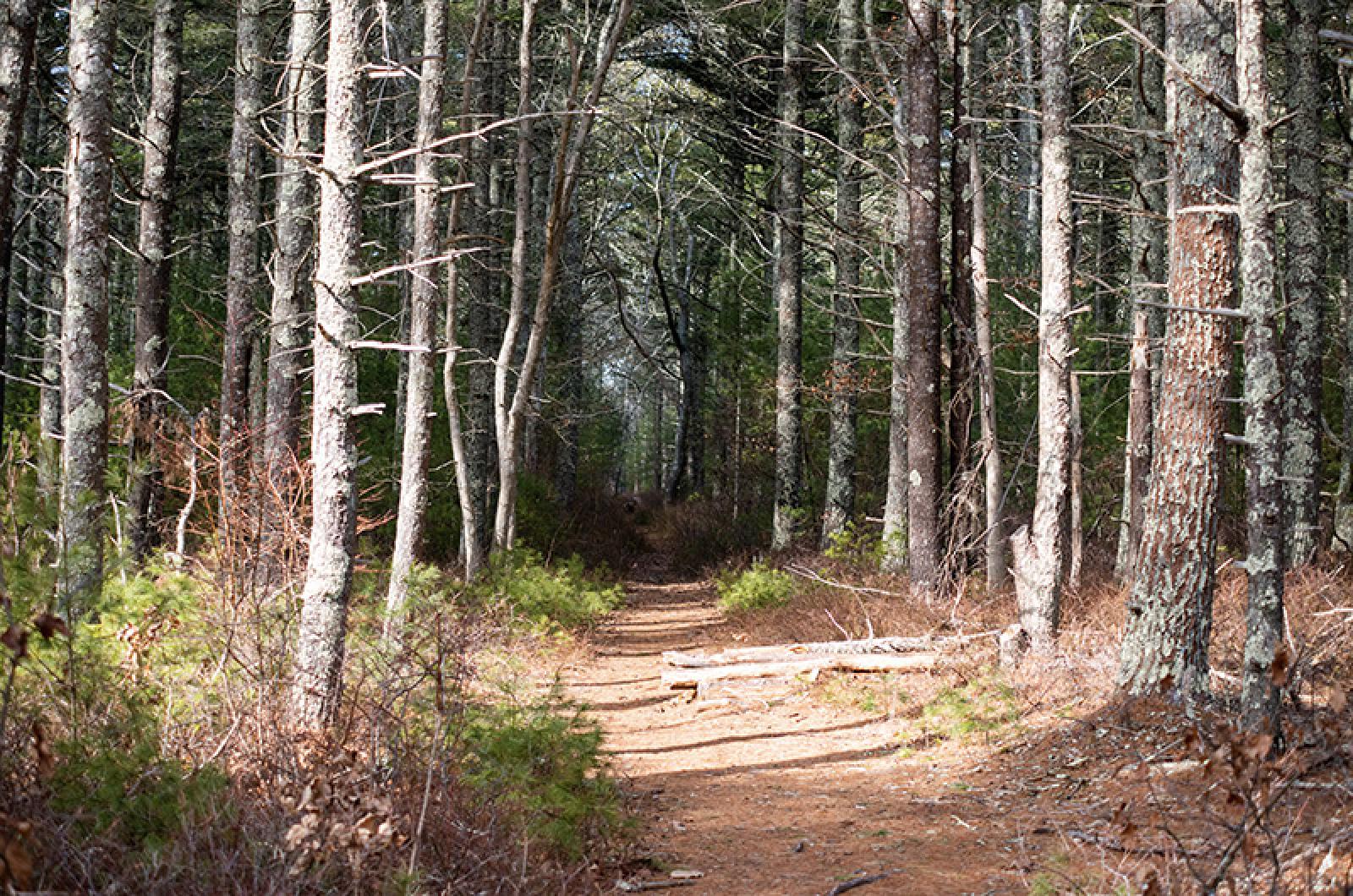The illegal trail clearing in the Manuel F. Correllus State Forest marks an unsettling low point in the long history of the Sheriff’s Meadow Foundation, the venerable Martha’s Vineyard land trust that has been a leading voice for the Island conservation movement since its founding by the former editor of this newspaper more than half a century ago.
It also has highlighted the sad neglect by the Massachusetts Department of Conservation and Recreation of the 5,000-acre forest that protects the Island’s groundwater and provides important habitat for a long list of rare and endangered species. The DCR has still not acknowledged its own lack of oversight in the stunningly extensive trail clearing project, but has finally hired a full-time superintendent for the forest, a hopeful sign.
That the 25 miles of snaking trails proved popular with bikers is beside the point. The state has well established policies and permits for trail creation designed to balance recreational interests against their inevitable ecological impacts. Failure to follow the rules suggests either ignorance or arrogance, and neither is a good look.
Sheriff’s Meadow, claiming it had mistakenly trusted that DCR had secured the proper permits, has taken responsibility for the unpermitted clearing on Natural Heritage lands. It is working with the DCR on a plan to close most of the trails and allow them to return to their natural state. All this will take place at the foundation’s expense.
But restoring the trails will be the easy part. Sheriff’s Meadow is facing a more daunting challenge of restoring the trust of the many Islanders who have looked to the organization over the years as a leading steward of the environment.
There are many fences to mend, not the least of which are with its traditional allies, other Island conservationists. Many of these are angry and upset at the recent missteps that have served to tarnish and even trivialize the broader goals of conservation on the Vineyard.
What are those goals today?
This is a time for self-reflection and deeper conversations, not only inside the board room at Sheriff’s Meadow, but in a far more outward-facing way with the Island public.
The Island is no longer the rural outpost it was when Henry Hough campaigned fiercely for land protection measures, but the need to safeguard conservation land has never been greater. A growing population is putting new stresses on the Island’s natural resources. And the trail clearing episode has highlighted the challenges of public-private partnerships.
The moment calls to mind the late Mary Wakeman, a prominent Edgartown conservationist who in the late 1960s led the move to save a swath of wild and unspoiled Chappaquiddick beachfront that was slated for development. Today Islanders know that place as Wasque Reservation. Later it became Ms. Wakeman’s dream to house all the Island conservation organizations under one roof. She saw it as an opportunity for vital collaboration and cross-communication.
Today the Wakeman Center in Vineyard Haven no longer houses all the conservation organizations, though collaboration does occur among Sheriff’s Meadow, the Martha’s Vineyard Land Bank, Vineyard Conservation Society and others through the Martha’s Vineyard Conservation Partnership.
We rarely hear about the partnership though; instead there is a growing public perception that the conservation community on the Island is a fragmented habitat all its own, undermined by inconsistent missions and, perhaps more dangerously, competition for funding.
The trails will grow back in the Correllus forest and the embarrassing clearing debacle will fade with time. But for Sheriff’s Meadow, there is opportunity here to go beyond just admitting its mistakes and take the lead in opening a new chapter in the effort to protect what’s left of the Vineyard.
The clock is running out on that.







Comments
Comment policy »